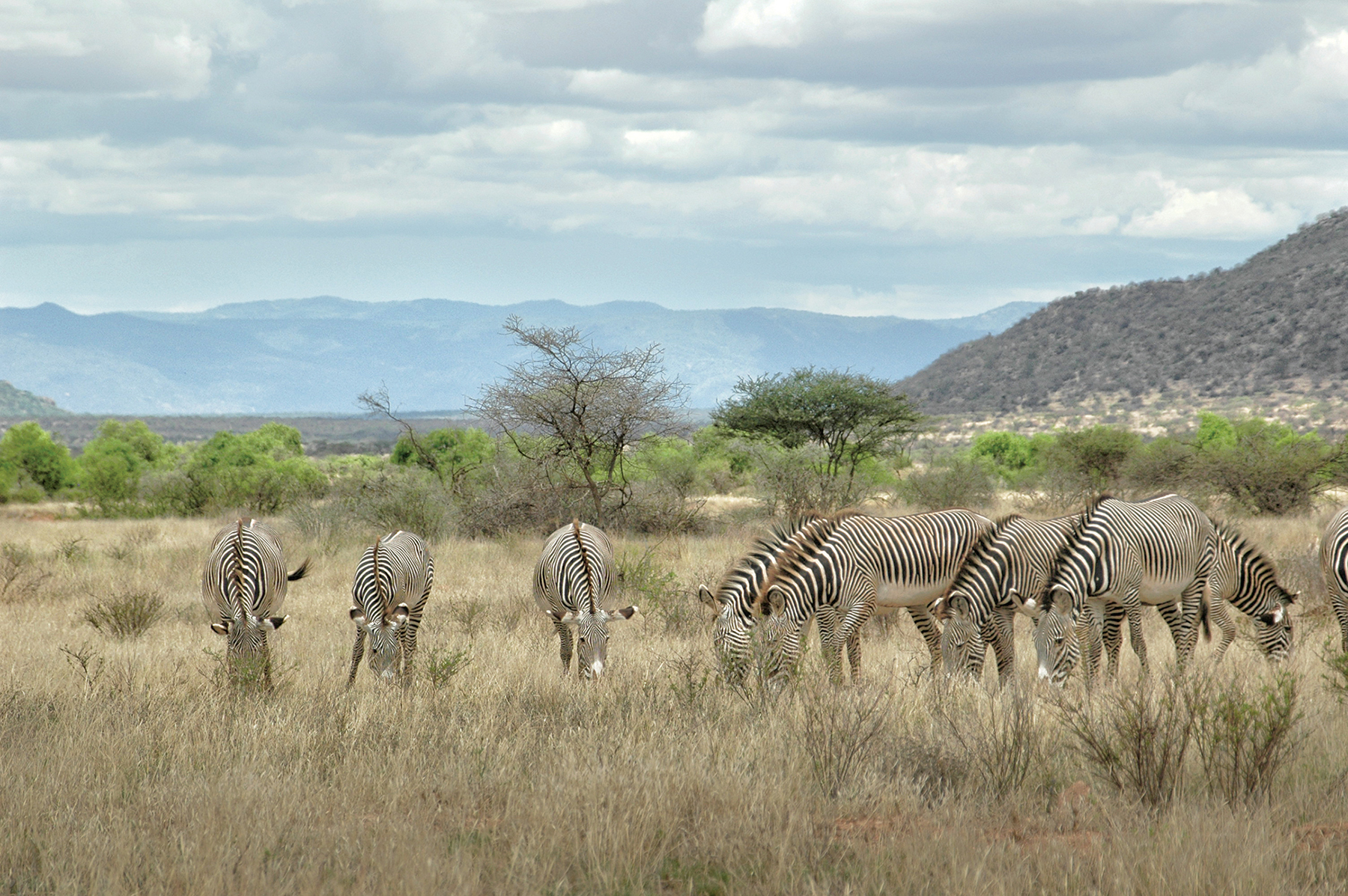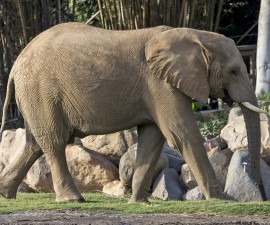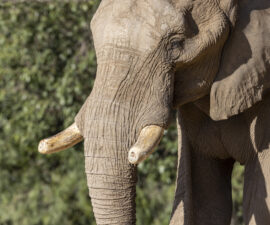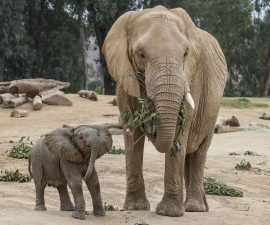BY Shifra Goldenberg, Ph.D. and Tomas Pickering, Ph.D.
Shifra Goldenberg, Ph.D. is a scientist for San Diego Zoo Wildlife Alliance;
Thomas Pickering, Ph.D. is a social science researcher for San Diego Zoo Wildlife Alliance.
Conservation Requires an Alliance
The semiarid savannas of Kenya’s northern rangelands support a rich diversity of wildlife, including drylands-adapted species like the endangered Grevy’s zebra Equus grevyi, the beisa oryx Oryx beisa, an ecological guild of African vulture species, and the second largest population of elephants in Kenya. This ecosystem, on which so many people and wildlife depend, undergoes dramatic seasonal changes as dry periods give way to biannual pulses of fresh vegetation and abundant standing water. The people who live in this region are pastoralists, for whom herding livestock is the dominant livelihood as well as their cultural heritage.
For pastoralists and wildlife alike, the dynamic patchwork of the savanna and its associated seasonal and spatial variability in resources necessitate the use of large areas for survival. Movement and connectivity are key. If adequate rain doesn’t fall in one area, localized rainfall elsewhere may provide needed pasture until greener periods arrive. During the wet season, ephemeral pools and flowing seasonal riverbeds free wildlife and livestock from the anchoring effect of permanent water, allowing them to traverse areas, and to reach distant resources that are inaccessible during the dry season. Deep knowledge and use of this large and perennially changing landscape generates the resiliency necessary for people and wildlife to survive the harshest periods.
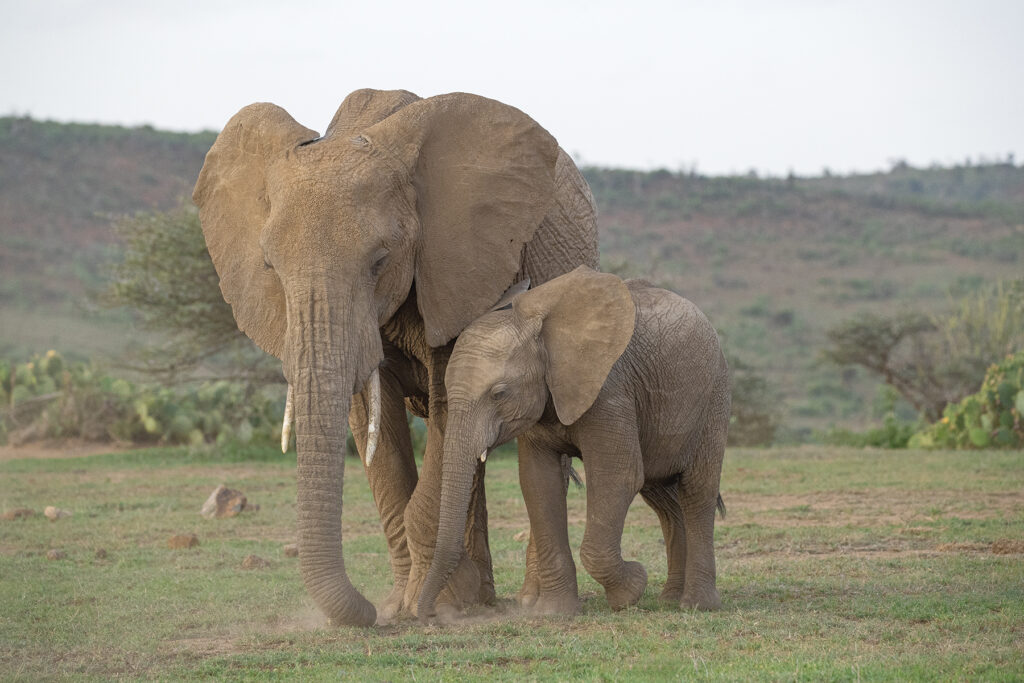
Because of the need for wildlife to move vast distances to track seasonal resources, the functional ecosystem of the savannas in Kenya’s northern rangelands is extensive. It encompasses a much broader range than government-protected areas alone. Most rangelands and wildlife exist in community-owned and -managed lands. In northern Kenya, community-based conservation is growing. Such efforts recognize the rights, and the historical and current contributions, of local and Indigenous communities to maintain wildlife biodiversity. Communities are championing a new model of improving livelihoods while conserving wildlife. And community-based efforts expand wildlife conservation to scales far larger than national parks and reserves could ever possibly cover.
The task before them is not easy. Living with savanna wildlife in communal land management settings comes with diverse and interconnected challenges. Communities organize their decisions through systems of governance, maintain open landscapes with infrastructure development through land use planning, and manage livestock grazing and crop production. At the same time, they find ways to coexist with large, clever, and potentially destructive mammals like lions, leopards, and elephants; and they work to control commercial poaching of species like rhinos and elephants, and subsistence poaching for wild meat during droughts. All of these issues are difficult to solve and require community, science, and governance. They require an alliance.

In northern Kenya, a network of conservation organizations is working to address these challenges, each tackling unique wildlife threats and opportunities, with local support and goals driving priorities and successes. San Diego Zoo Wildlife Alliance’s Kenya Rangelands Program in the Savanna Conservation Hub partners with many of them to better understand and address the complex challenges that communities and wildlife face. For example, we support the Lion Governors program of Ewaso Lions, which leverages the status of elders in Samburu society to strengthen training in human-lion coexistence. We also support the Healing Rangelands program of Grevy’s Zebra Trust, which relies on pride in communal land ownership and dedication to livestock health to implement pasture restoration, erosion control, and responsible livestock management practices. Both of these programs leverage existing cultural institutions and long-term relationships to implement sustainable solutions. Healthier grasslands affect the abundance and distribution of prey populations on which carnivores depend, and positive attitudes toward sometimes dangerous and destructive wildlife foster participation and interest in other conservation initiatives.
These examples demonstrate the interconnectivity of multiple challenges and solutions. These organizations, along with our other partners, including Northern Rangelands Trust and Save the Elephants, enhance the capacity of local communities to manage wildlife. As community-based conservation gains momentum internationally, we are working to strengthen our alliances to champion its success in northern Kenya.
Discover how you’re empowering community-based conservation and securing the future for some of the world’s most iconic wildlife through our Savanna Conservation Hub.

